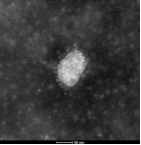The SKLRD works with Guangzhou Customs and Fifth Affiliated Hospital of Sun Yet-sen University to isolate virus from feces of COVID-19 patient
2020-02-13947On February 10, under the guidance of academician Zhong Nanshan, the team of professors Zhao Jincun and Huang Jicheng of SKLRD cooperated with the Fifth Affiliated Hospital of Sun Yet-sen University to isolate a novel coronavirus strain once again from the feces swab specimen of a patient of COVID-16 at the Bio-safety P3 Laboratory co-built with Guangzhou Customs Technology Center. The sample was feces swab specimen provided by the aforesaid hospital. Through inoculating with the sample with multiple cell lines and passing it down, the SKLRD ultimately isolated a novel coronavirus strain from Vero E6 cell (it’s reported that the team of academician Li Lanjuan of the Key National Laboratory for Diagnosis and Treatment of Infectious Diseases, Zhejiang University has also isolated virus from the feces sample of a patient). Earlier, it was reported that positive novel coronavirus was detected in the feces of a confirmed patient of COVID-19, but it’s still unknown whether there’s live virus in the feces.
The discovery of the SKLRD has proven that live virus indeed exists in the feces. Though there are still no sufficient evidences to prove fecal-oral transmission, considering that two COVID-19 patients were discovered on the same building recently at Hong Kong (which might be related with the pollution of sewer of the building), it’s necessary to warn citizens to pay more attention to personal and family hygiene. To name some examples, washing hands after a visit to the toilet, keeping the sewer pipes smooth, try to avoid possible occurrence of virus transmission via feces. The discovery and isolation of live virus in the feces of patients has provided an important tip for the development of prevention and control strategies against COVID-19 in China, which is important to public hygiene and safety.
Currently, the SKLRD and Guangzhou Customs Technology Center have finished the genome sequencing of the virus train, and used the results of indirect immunofluorescence experiment to indicate that the isolated virus strain can be identified in the plasma of the patient (Fig. 1). Virion can be observed under electron microscope, which has a typical coronavirus structure (Fig. 2).

Fig.1 Indirect immunofluorescence test

Fig. 2 The results of negative staining under electron microscope
















